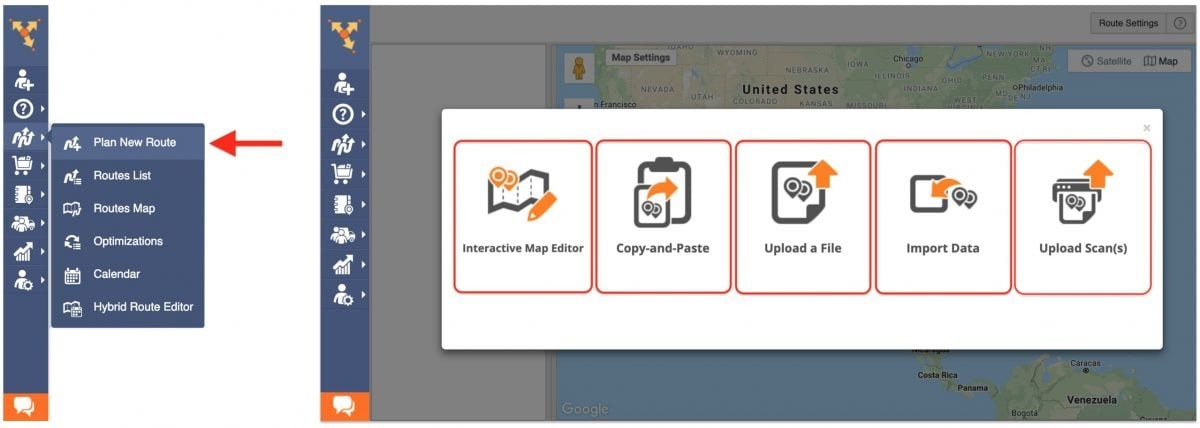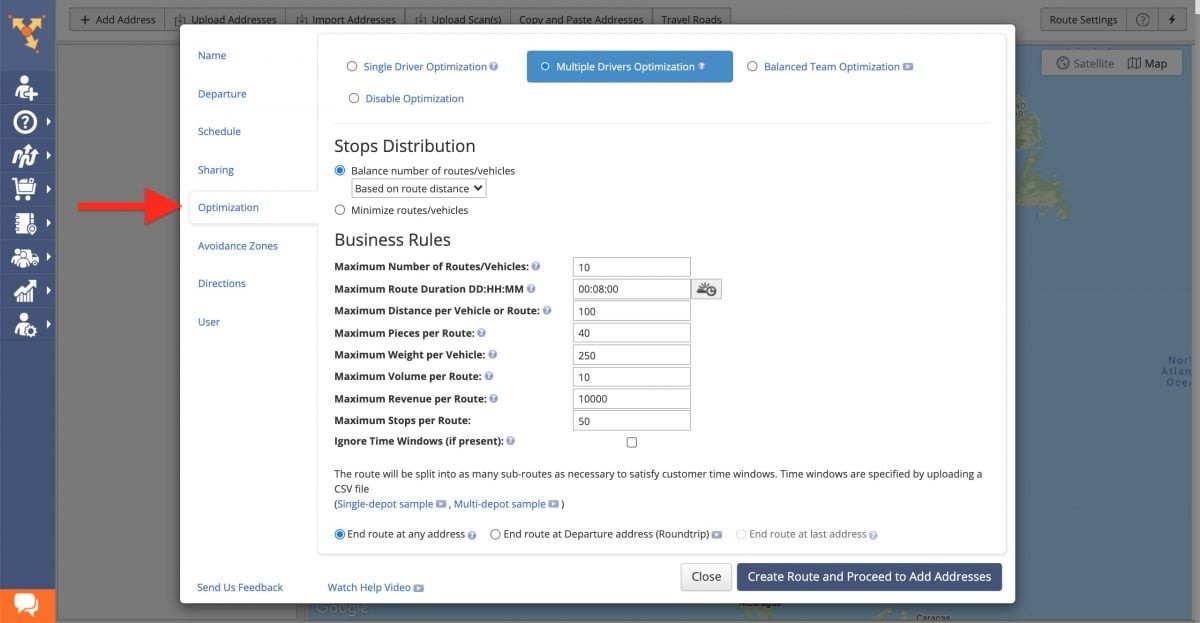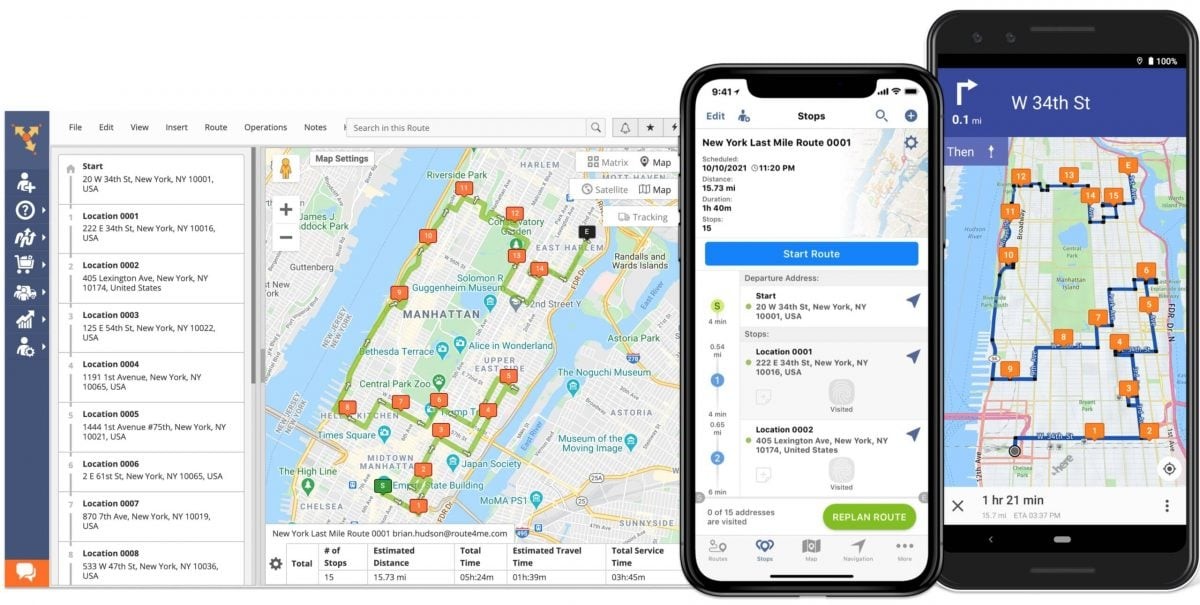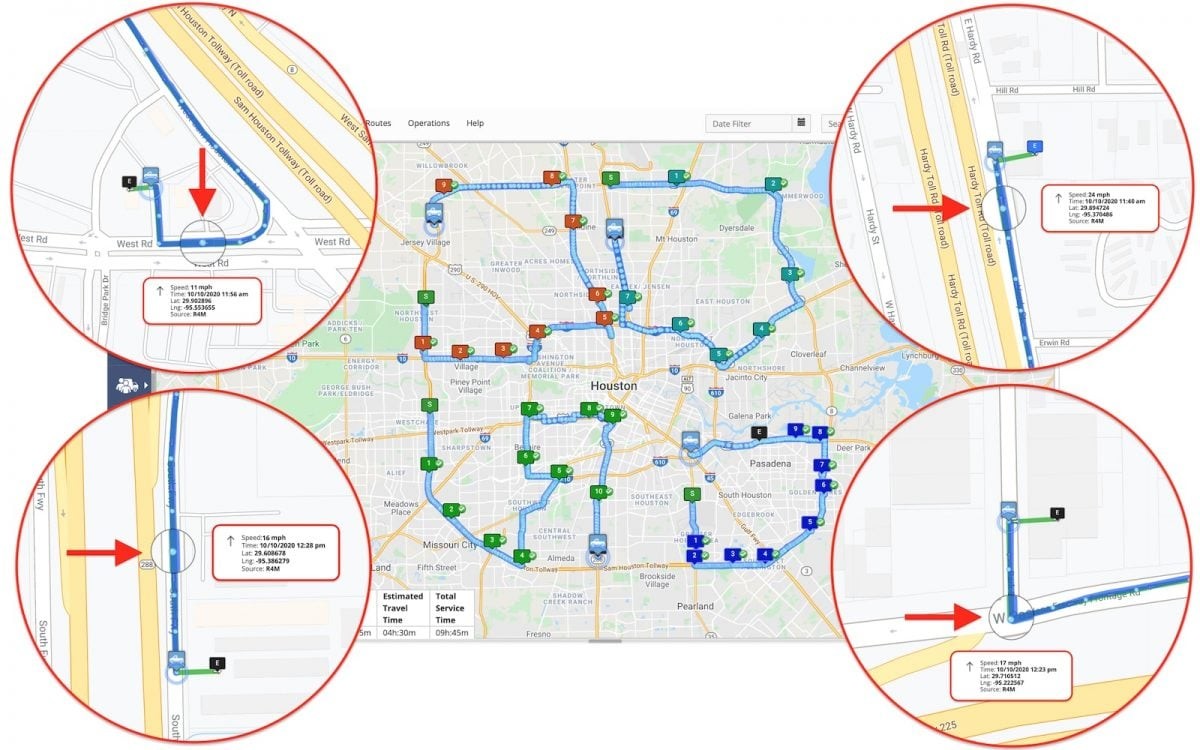In the digital age, truck route planning has undergone a true revolution. However, many transportation businesses are still hesitant, caught between traditional manual truck routing and the adoption of modern support tools. Is manual truck route planning still an optimal solution in the current landscape, or is it a mistake to avoid to ensure efficient and safe operations? This article from Xe Tải Mỹ Đình will delve into analyzing this issue, helping you make the most informed decision for your transportation operations.
Manual Truck Routing and Its Limitations
Manual truck routing, also known as traditional truck route planning, typically relies on the experience of dispatchers or drivers, combined with paper maps or basic navigation tools. This method may be suitable for small-scale transportation, limited operating ranges, and a small number of orders. However, as transportation scale expands, the number of vehicles increases, and delivery time requirements become stricter, manual truck routing reveals many limitations:
- Time-consuming and Labor-intensive: Manually studying maps, calculating distances, travel times, and limitations such as bridge load limits, underpass heights, etc., requires a significant amount of time and effort from dispatchers. This can lead to delays in planning and affect overall operational efficiency.
- Difficult to Optimize Routes: Manual routing struggles to simultaneously consider multiple complex factors such as real-time traffic conditions, delivery and pickup times, vehicle capacity, and traffic regulations. Consequently, the planned routes are often not the most optimal in terms of fuel costs, travel time, and vehicle utilization efficiency.
- Prone to Errors: Humans are prone to errors, especially when dealing with large amounts of information and complex calculations. A small mistake in manual route planning can lead to serious consequences such as driving on prohibited roads, traffic violations, endangering drivers and cargo, and even damaging the company’s reputation.
- Difficult to Control and Track: With manual methods, tracking delivery progress, vehicle location, and driver performance becomes difficult and inaccurate. This hinders effective management and coordination of transportation operations.
Why Google Maps Isn’t a Replacement for Manual Truck Routing
Many mistakenly believe that Google Maps or similar map applications can replace manual truck route planning. However, Google Maps and similar applications are primarily designed for passenger vehicles, not suitable for the specifics of trucks and commercial vehicles.
Google Maps can be helpful for finding locations, gas stations, and parking lots, but it cannot meet critical requirements in truck routing such as:
- Ignoring Truck Restrictions: Google Maps does not incorporate data on bridge load limits, underpass heights, truck-restricted roads, and other specific traffic regulations for trucks. Using Google Maps can lead truck drivers onto unsuitable routes, causing hazards and traffic violations.
- Not Optimized for Multiple Stops: Google Maps is not designed to efficiently optimize routes for multiple stops. For transportation businesses with many orders and multiple delivery/pickup points, using Google Maps will not optimize routes, leading to wasted time and costs.
- Lack of Specialized Management Features: Google Maps lacks specialized management features necessary for transportation operations such as real-time vehicle tracking, order management, performance reporting, and integration with other transportation management systems.
 Uploading delivery addresses to truck routing software for commercial fleets
Uploading delivery addresses to truck routing software for commercial fleets
Truck Routing Software: The Optimal Solution to Replace Manual Truck Routing
To overcome the limitations of manual truck routing and Google Maps, specialized truck routing software is the optimal solution for transportation businesses. This software is specifically designed to meet the complex requirements of truck route planning, offering numerous superior benefits:
-
Route Optimization: Truck routing software uses advanced algorithms to analyze and calculate a range of factors such as:
- Vehicle weight, height, width, and length restrictions.
- Bridges and underpasses with height restrictions.
- Cargo type (including hazardous materials).
- Road type (highways, toll roads, truck-restricted roads, etc.).
- Real-time traffic conditions.
- Delivery and pickup times.
- Vehicle and driver capabilities.
- Relevant traffic regulations and laws.
From this, the software helps create the most optimal route in terms of distance, time, fuel costs, and ensures compliance with legal regulations.
-
Save Time and Costs: The software automates the route planning process, significantly saving dispatchers time and effort. Optimized routes help reduce fuel costs, vehicle wear and tear, and increase vehicle utilization efficiency, thereby reducing overall operating costs.
-
Improve Management and Operational Efficiency: Truck routing software often integrates transportation management and operation features such as:
- Real-time vehicle tracking (GPS).
- Order and delivery schedule management.
- Job dispatch and driver coordination via mobile apps.
- Electronic Proof of Delivery (e-POD) collection.
- Performance reporting and transportation data analysis.
These features help businesses manage and operate transportation activities more efficiently, improving service quality and customer satisfaction.
-
Reduce Risks and Ensure Safety: Truck routing software helps avoid unsuitable routes, reducing the risk of traffic violations and accidents, ensuring the safety of drivers, cargo, and other road users.
8 Steps to Effective Truck Route Planning with Specialized Software
To maximize the benefits of truck routing software, you can refer to the following 8-step process:
1. Build a Commercial Vehicle Fleet on Routing Software
Before starting planning, enter detailed information about your fleet into the software. Information to include: vehicle type, dimensions (height, width, length), weight (gross weight, axle weight), type of cargo it can carry, and other technical specifications. Building a detailed profile for each vehicle helps the software calculate and select the most suitable route for each vehicle type.
2. Enter Delivery Addresses
Enter the list of delivery addresses and destinations into the software. Professional truck routing software often supports bulk import from Excel or CSV files, saving data entry time.
3. Choose an Optimization Method
Truck routing software provides various optimization methods, depending on the needs and specifics of the business. You can choose to optimize by time, distance, cost, number of vehicles, driver skills, or a combination of factors.
 Route optimization constraints of truck routing software for commercial routing
Route optimization constraints of truck routing software for commercial routing
4. Select Route End Point
Define the endpoint for each route. You can choose to end at the starting point (round trip), at the last stop, or at another optional location. The software will automatically calculate and suggest the optimal endpoint.
5. Add Optimization Conditions and Business Rules
Set up additional optimization conditions and specific business rules for your company, such as driver working hours, delivery and pickup times, customer priorities, and other constraints.
6. Optimize Truck Routes
After completing the setup steps, press the “Optimize” button. The software will automatically calculate and create the most optimal route based on the entered information and conditions. This process is usually very fast, taking only a few seconds.
7. Dispatch Routes to Drivers
Assign the optimized route to the appropriate driver and truck. The software allows sending routes directly to the driver’s mobile application, making it easy for drivers to receive information and navigate along the optimized route.
 Dispatch truck routes to truckers on truck routing software app
Dispatch truck routes to truckers on truck routing software app
8. Track Drivers During Transit
Use the GPS tracking feature integrated into the software to monitor driver location and progress in real-time. This helps you understand operational status, promptly handle arising issues, and ensure on-time delivery.
 Track trucks and CMVs on truck routes with truck routing software
Track trucks and CMVs on truck routes with truck routing software
Conclusion
In an increasingly competitive transportation landscape with ever-higher demands for efficiency and safety, continuing to use manual truck routing for route planning is no longer a suitable option and poses many risks. Instead, adopting specialized truck routing software is an inevitable step, helping businesses optimize transportation operations, save costs, improve management efficiency, and ensure safety. Xe Tải Mỹ Đình recommends that transportation businesses switch to using truck routing software to enhance competitiveness and achieve sustainable development in the future.